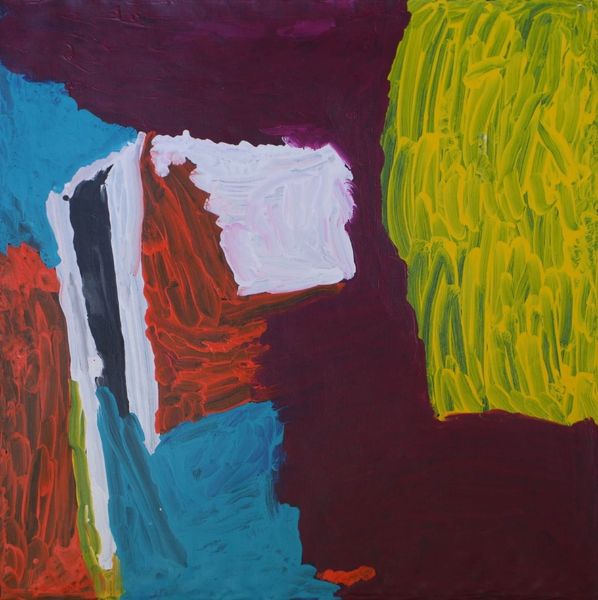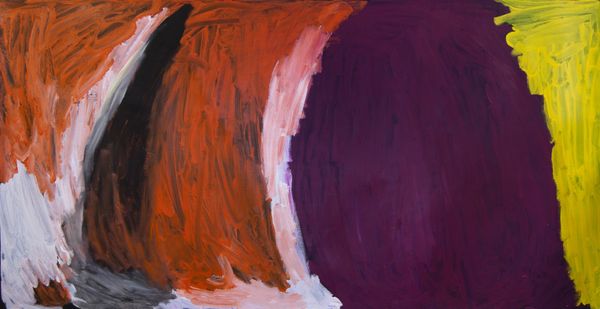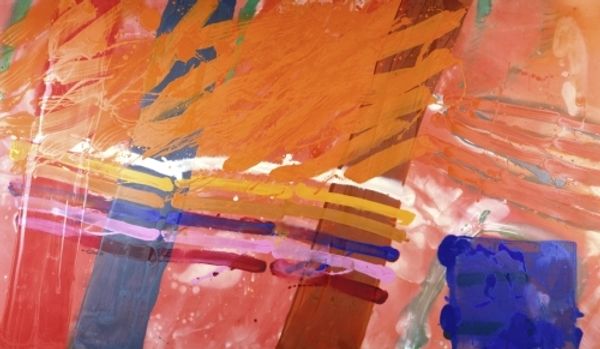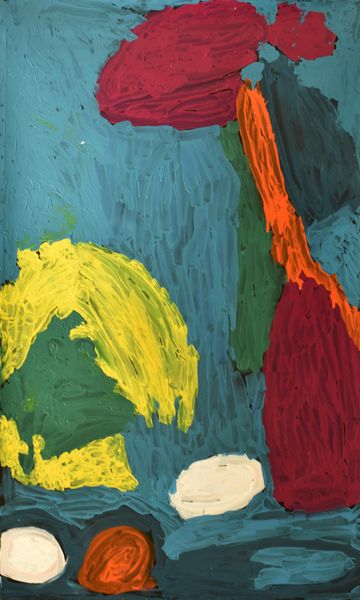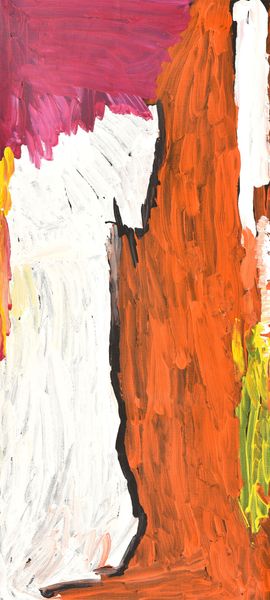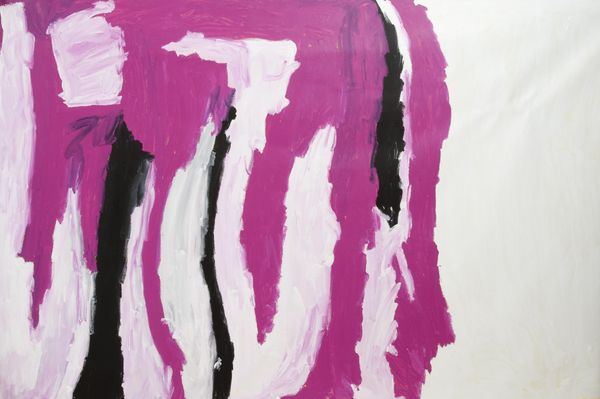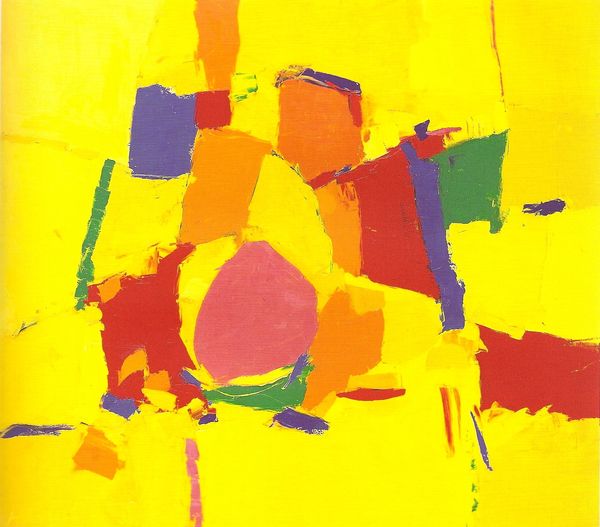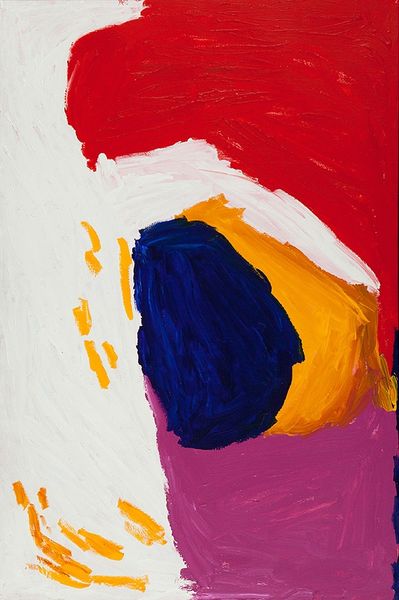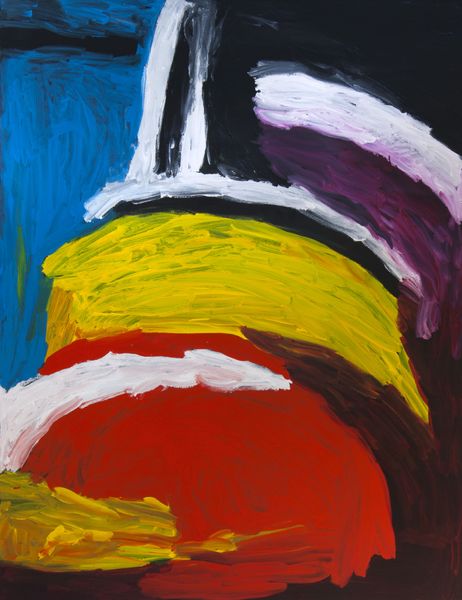
painting, acrylic-paint
#
abstract painting
#
painting
#
acrylic-paint
#
possibly oil pastel
#
acrylic on canvas
#
abstraction
#
abstract art
Copyright: Sally Gabori,Fair Use
Curator: Immediately striking is its confident brushwork; bold colors thrown into forms that suggest something but remain abstract. Editor: We are looking at “Dibirdibi Country”, a 2011 painting by Sally Gabori. It's acrylic on canvas. Gabori was an Indigenous Australian artist, and her work speaks volumes about the history of her community and the political landscapes she navigated. Curator: Absolutely. It’s hard not to see the physicality of the paint itself, those thick strokes, and how the white almost fights with the earthier tones for dominance. There is very little blending and very defined brushstrokes. I wonder what kind of brushes or tools she used to create these specific textures and volumes, so dense, giving a three-dimensional quality. It pushes painting almost into the realm of sculpture. Editor: Gabori’s art emerged rather late in her life and quickly gained recognition, largely due to its perceived authenticity, and the powerful story of cultural resurgence that underpinned her practice. However, let's remember, museums and galleries played a vital role in constructing that narrative for wider consumption, both good and bad, no doubt. Her works gave visibility to stories from Bentinck Island after its inhabitants faced displacement due to a cyclone, and forced resettlement at the Presbyterian Mission settlement on Mornington Island in 1948. Curator: It's a beautiful thing, to think about this art as bearing witness, or bearing a connection to a specific place and time through materiality, particularly since she seems to resist obvious literal representation. Editor: How Gabori translated her connection to Country onto the canvas tells not only a personal history but reflects a collective experience shaped by displacement and government policies toward indigenous populations. In turn, how that artwork, and Gabori herself, was interpreted by the art world contributes to Australia’s broader historical narrative. Curator: Indeed, so much is embedded in the paint and how it was applied, giving physical form to lived history, of personal experiences as well as broader social forces at work. Editor: Thinking about Gabori’s legacy in the canon of Australian art forces us to confront the ongoing challenges of representation and the politics inherent in any act of cultural preservation. Thank you for making that come alive in this artwork.
Comments
No comments
Be the first to comment and join the conversation on the ultimate creative platform.
